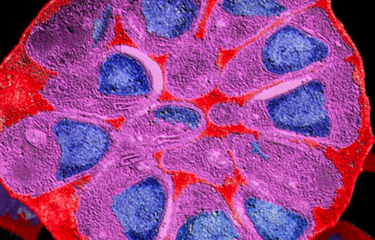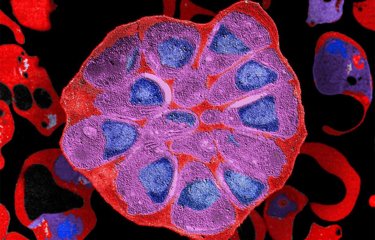Malaria remains a major public health burden in some world regions. In 2018, 237,000 cases were reported in Brazil, 91.5% of them caused by the parasite Plasmodium vivax. A new malaria drug known as tafenoquine was recently approved by several medicines regulatory authorities to treat P. vivax. Scientists from the Institut Pasteur, in partnership with the Oswaldo Cruz Foundation (Fiocruz) in Rio de Janeiro, Brazil, have modeled the effect of introducing this new drug.
A major challenge in tackling P. vivax malaria is the frequency of relapse in the hepatic phase. Such relapses can lengthen the initial infection by several months or even years, thereby contributing to transmission. The efficacy of the current treatment for preventing relapse, primaquine, is compromised by poor patient adherence. Tafenoquine offers an alternative as it only requires a single dose.
A test to minimize side effects
Like primaquine, tafenoquine may cause hemolysis in people with glucose-6-phosphate dehydrogenase deficiency (G6PDd), or favism. This hereditary deficiency is relatively frequent in Africa and in some ethnic groups among the Brazilian population living in malaria-endemic areas. New diagnostic techniques to identify G6PD-deficient patients have recently been developed to accompany patient treatment. Brazil will be the first endemic country to introduce tafenoquine with the G6PDd test, which will help improve adherence to treatment.
Estimated reduction in incidence of 38% over the first five years
"Evaluating the public health impact of introducing this drug is a complex challenge. The probable improvement in adherence to treatment, variable eligibility criteria and multiple transmission patterns are all factors that need to be taken into account," explain Narimane Nekkab and Michael White, from the Malaria: Parasites and Hosts and Infectious Disease Epidemiology and Analytics Units. Scientists from the Institut Pasteur and the Oswaldo Cruz Foundation (Fiocruz) in Rio de Janeiro used a mathematical modeling approach based on real-world data to study these complex dynamics in a bid to predict the impact over the coming years. They estimated that the new treatment regimen could improve parasite elimination by 20%, which would lead to a 38% reduction in clinical incidence over the first five years of use.
Although use of the new drug on its own will not fully eliminate the parasite, these results confirm its potential to lead to a significant reduction in cases. G6PDd diagnosis is needed alongside administration of the drug to guarantee this positive impact.
This work was made possible by funding from Medicines for Malaria Ventures
Source :
Estimated impact of tafenoquine for Plasmodium vivax control and elimination in Brazil: A modelling study, PLoS Med, 23 avril 2021.
https://doi.org/10.1371/journal.pmed.1003535
Narimane Nekkab1, Raquel Lana2, Marcus Lacerda3,4, Thomas Obadia1, Andre´ Siqueira5, Wuelton Monteiro3,6, Daniel Villela2, Ivo Mueller1,7,8, Michael White1
1 Malaria: Parasites and Hosts, Department of Parasites and Insect Vectors, Institut Pasteur, Paris, France,
2 Programa de Computação Cientifica, Fundação Oswaldo Cruz, Rio de Janeiro, Brazil,
3 Diretoria de Ensino e Pesquisa, Fundação de Medicina Tropical Dr. Heitor Vieira Dourado, Manaus, Brazil,
4 InstitutoLeônidas e Maria Deane, Fundação Oswaldo Cruz, Manaus, Brazil,
5 Instituto Nacional de Infectologia Evandro Chagas, Fundação Oswaldo Cruz, Rio de Janeiro, Brazil,
6 School of Health Sciences, Universidade do Estado do Amazonas, Manaus, Brazil,
7 Population Health & Immunity Division, Walter and Eliza Hall Institute of Medical Research, Parkville, Victoria, Australia,
8 Department of Medical Biology, University of Melbourne, Melbourne, Victoria, Australia
This study is part of the priority scientific area Emerging infectious diseases of the Institut Pasteur's strategic plan for 2019-2023.





